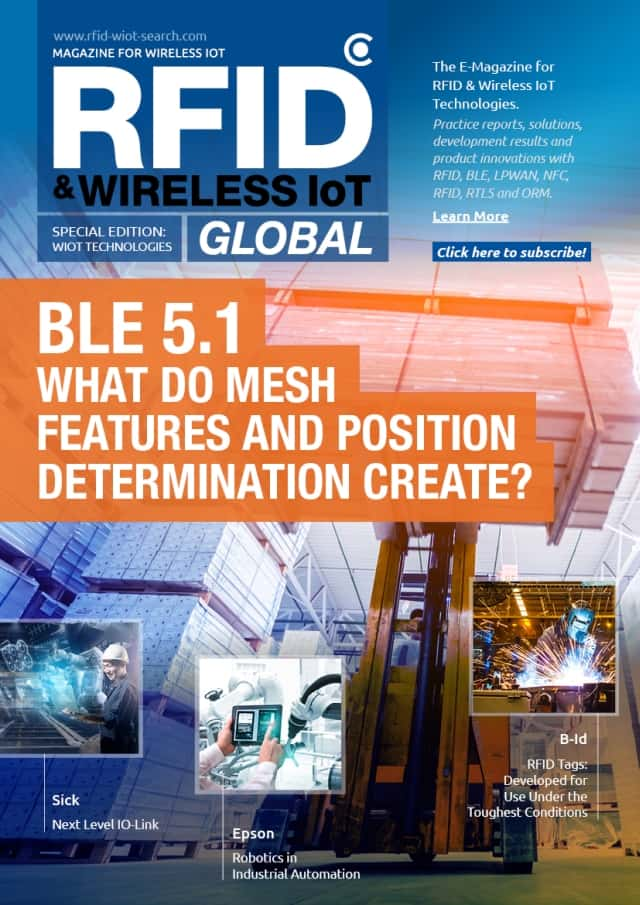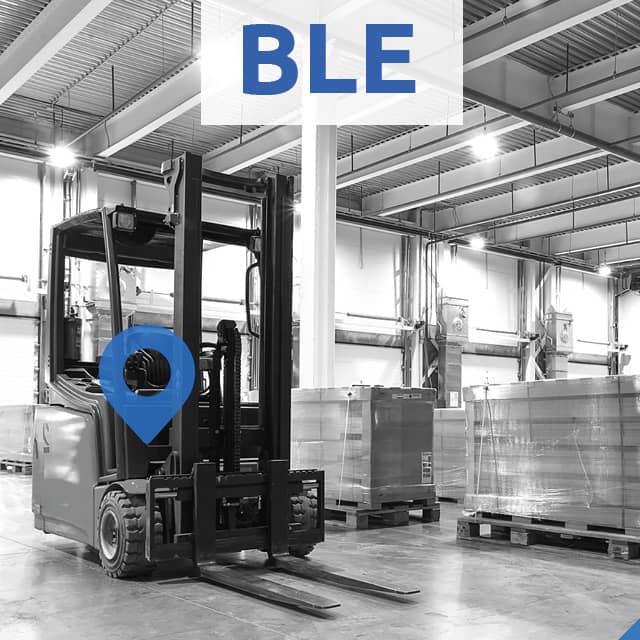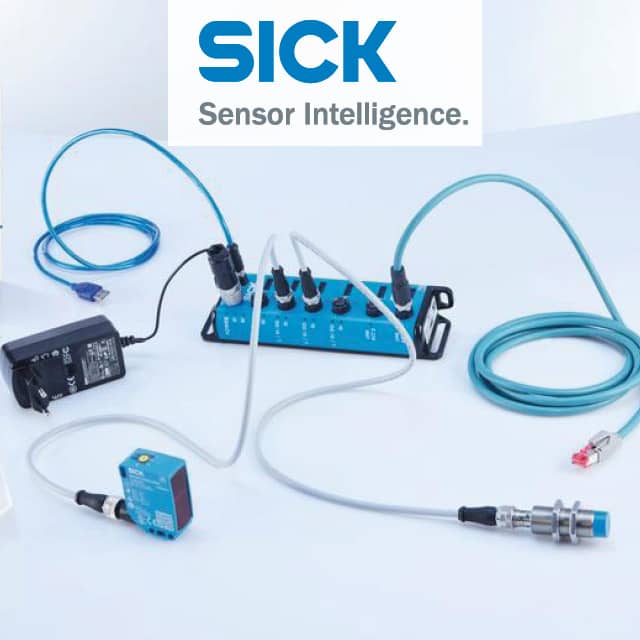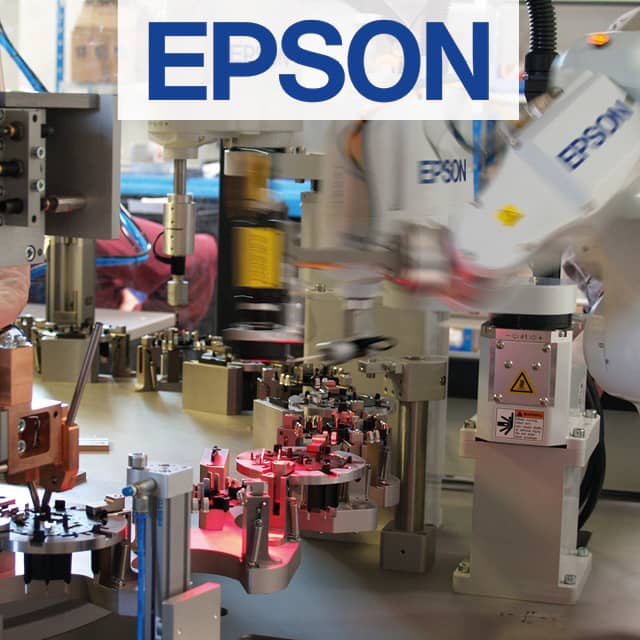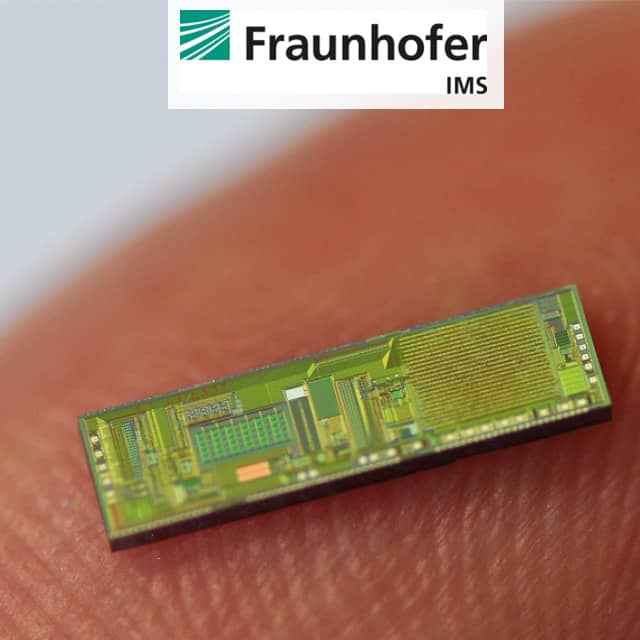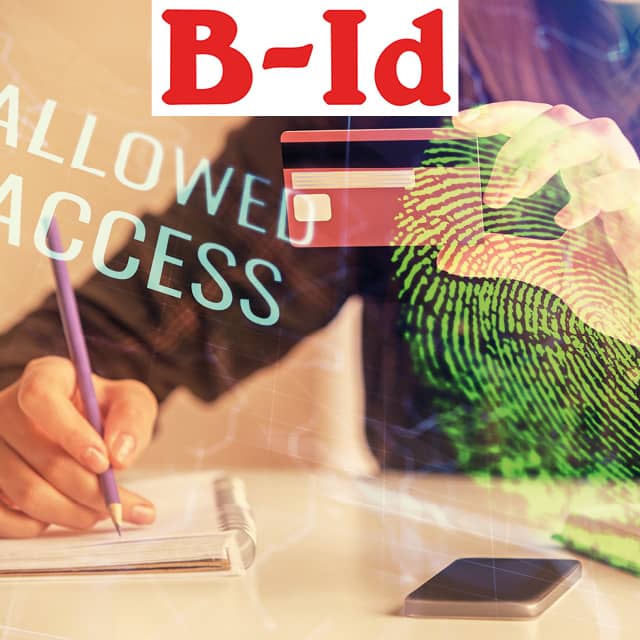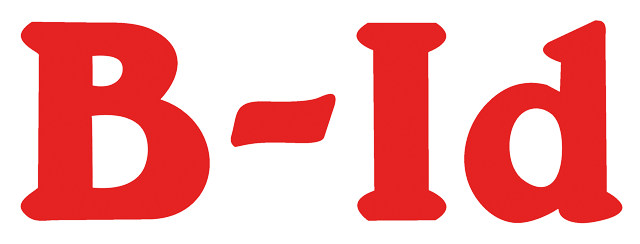Wireless IoT Technology: Developments & Trends
For the first time ever, this e-technology magazine will be published with current insights into the development of the latest readers, transponders, printers, and interesting installations. The focus lies on these technologies:
BLE, operating at 2.4 GHz, enables devices to send or receive data over distances of up to 100 meters. The solution-dependent energy technology guarantees a battery life of up to 10 years for the beacons.
SAW technology uses the surface acoustic wave effect. Ultrasonic signals are reflected at markings on the surface. SAW tags can even be used in applications at temperatures exceeding 300 degrees Celsius.
RFID and NFC are radio technologies. Hybrid designs make it possible to collect data with different devices.
Mobile networks such as 4G/5G offer data rates of up to 20 Gbit/s, increased frequency capacity and data throughput, real-time transmission, and latency times of less than 1 ms.
UWB is mainly used in RTLS applications on frequencies from 3.1 GHz to 10.6 GHz in short-range real-time indoor localization and tracking applications. WiFi-based RTLS can often use existing WiFi structures.
LPWAN technologies such as Sigfox, NB IoT or LoRaWAN are designed to enable communication over long distances (up to several kilometres) at a low bit rate between connected objects, such as battery-powered sensors.
In this issue













